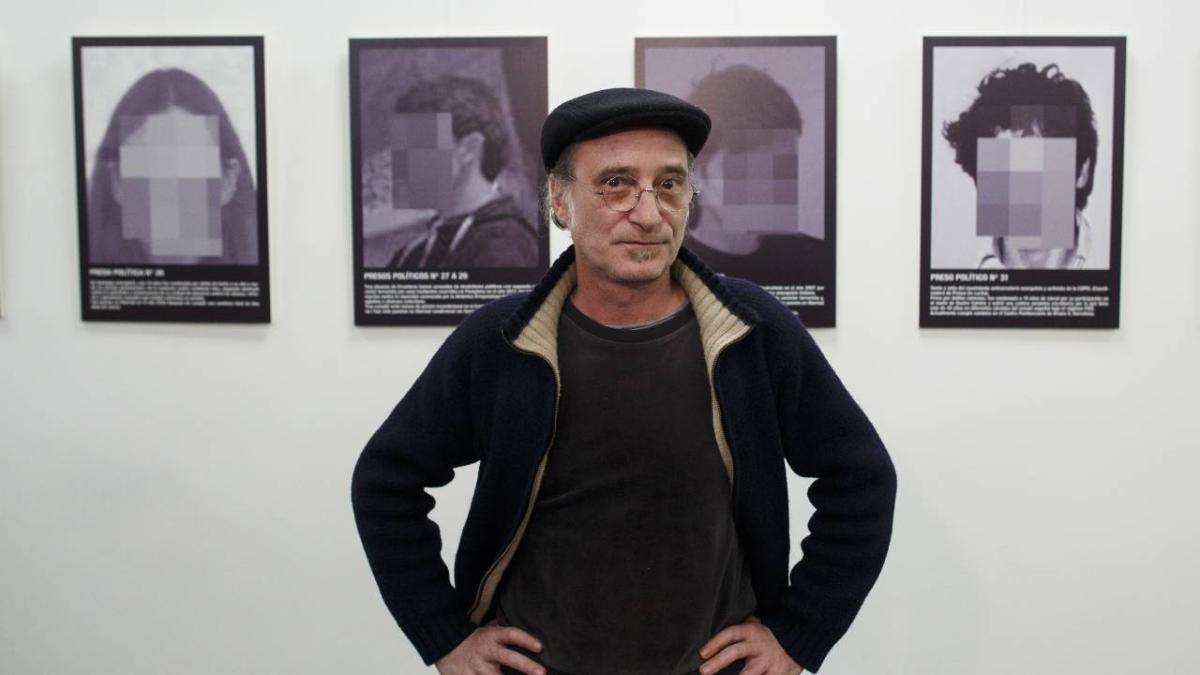
Santiago Sierra‘s pitch for Dark Mofo is the latest in a repertoire of confronting performance art pieces the Spanish artist has been curating and presenting throughout his career. With the latest request for First Nations people to give blood so he can soak the British flag in it to complete his work, Union Jack, many believe he has once again stepped over the line from provocative to exploitative.
This is not the first time Sierra has used and abused creative and artistic freedom for a piece and found himself met with furious backlash or people believing that he’d pushed the envelope too far.
In 2000, Sierra raised eyebrows with his piece, 160cm Line Tattooed on 4 People, where he paid four sex workers with heroin addictions the price of a single shot (around 12,000 Spanish pesetas at the time) to give their consent to be tattooed and filmed.
In the 30 minute video, the women – their flesh Sierra’s canvas – smoked, chatted and watched on as the tattoo artist inked the horizontal line across their backs, while two men in dark clothes periodically appeared with tape measures to check the length of the line.
Though not illegal – the women gave consent and were financially compensated for their time – the piece plays in the ambiguous grey space between confronting art and abuse. Art scholar Ivana Dizdar explored this grey area Sierra continues to take advantage of in her 2019 essay, Toward Art, Toward Torture: Drawing The Line In The Work Of Santiago Sierra. In it, she argues that Sierra’s “problematizing the distinction” between art and torture, complicating the limits of art itself.
Six years later, Sierra received a huge backlash from the German Jewish community for his piece, 245 Cubic Meters.
The Guardian reported that this 2006 installation involved parking six cars outside a former synagogue on the outskirts of Cologne – next to a restored Jewish cemetery that was desecrated by Nazis – and filling the building with poisonous carbon monoxide by rigging up the exhaust pipes to feed in through a window. Visitors were then required to sign a waiver before being fitted with a gas mask and chaperoned by a firefighter as they walked through the building one at a time.
Through his intention of wanting to “protest against banalisation of the Holocaust” and counter the “trivialization of our memory of the Holocaust”, Sierra essentially created a bootleg gas chamber, drawing immediate anger and outrage from Jewish communities and their leaders.
Writer and Holocaust survivor Ralph Giordano told German radio at the time it was “despicable”.
“What’s artistic about attaching the poisonous exhaust from six cars into a former synagogue?” he asked.
“And who gave permission for this?”
Meanwhile, Stephan Kramer, then secretary of the central Jewish council in Germany said it’s “a scandal” that the piece was allowed to happen, and that the “provocation at the expense of Holocaust victims” was not only an insult to survivors, but to the Jewish community as a whole.
Other works that have drawn both sides of attention to Sierra include when he paid a man to live behind a brick wall for over two weeks, blocked the entrance to Lisson Gallery’s new space on opening night and only allowed in people with Spanish passports, paid workers to remain inside cardboard boxes for four hours a day over six weeks, and planted completely black flags at the North and South Poles to challenge the idea of nationalistic borders.



